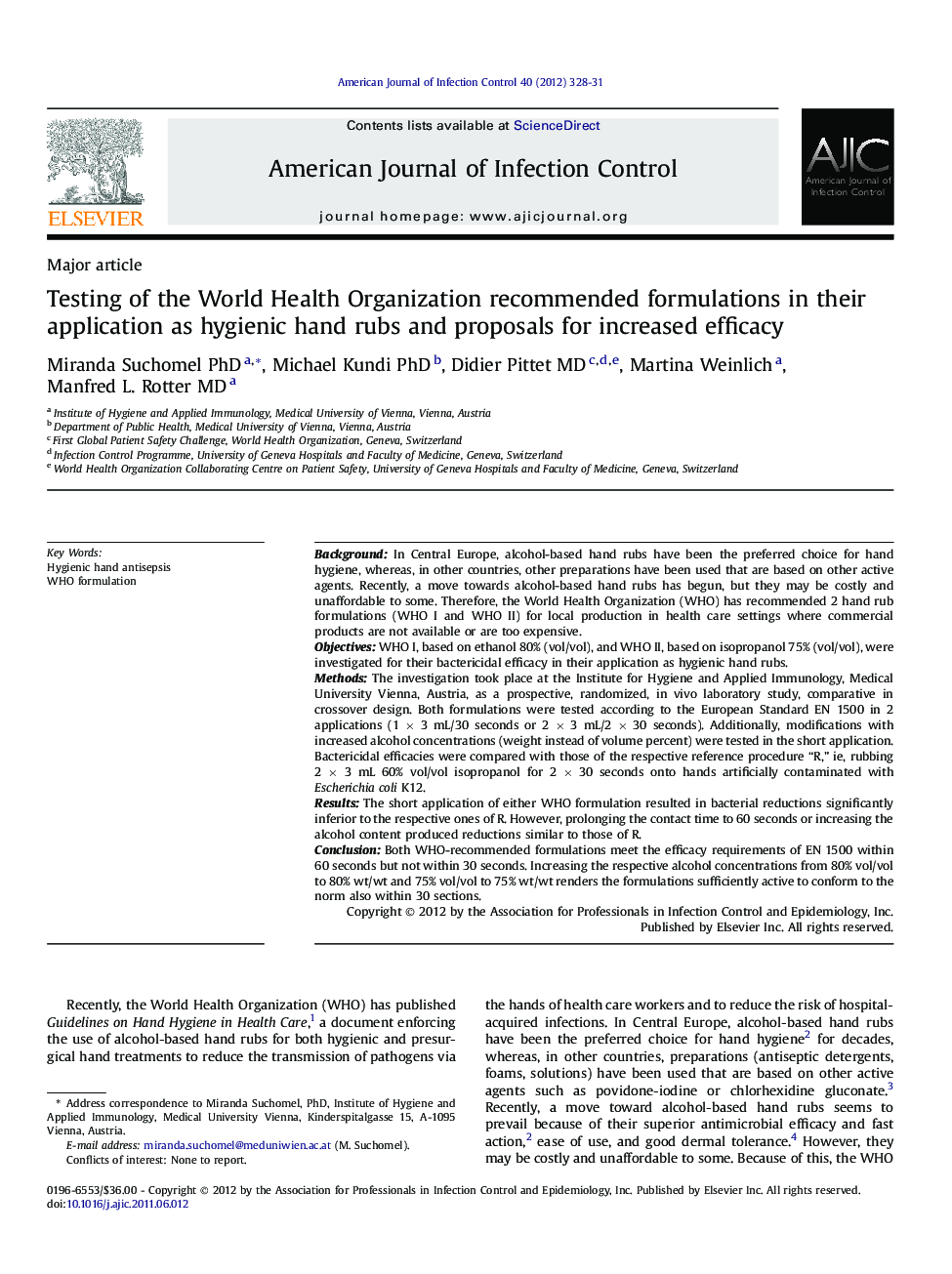| کد مقاله | کد نشریه | سال انتشار | مقاله انگلیسی | نسخه تمام متن |
|---|---|---|---|---|
| 2637936 | 1563513 | 2012 | 4 صفحه PDF | دانلود رایگان |

BackgroundIn Central Europe, alcohol-based hand rubs have been the preferred choice for hand hygiene, whereas, in other countries, other preparations have been used that are based on other active agents. Recently, a move towards alcohol-based hand rubs has begun, but they may be costly and unaffordable to some. Therefore, the World Health Organization (WHO) has recommended 2 hand rub formulations (WHO I and WHO II) for local production in health care settings where commercial products are not available or are too expensive.ObjectivesWHO I, based on ethanol 80% (vol/vol), and WHO II, based on isopropanol 75% (vol/vol), were investigated for their bactericidal efficacy in their application as hygienic hand rubs.MethodsThe investigation took place at the Institute for Hygiene and Applied Immunology, Medical University Vienna, Austria, as a prospective, randomized, in vivo laboratory study, comparative in crossover design. Both formulations were tested according to the European Standard EN 1500 in 2 applications (1 × 3 mL/30 seconds or 2 × 3 mL/2 × 30 seconds). Additionally, modifications with increased alcohol concentrations (weight instead of volume percent) were tested in the short application. Bactericidal efficacies were compared with those of the respective reference procedure “R,” ie, rubbing 2 × 3 mL 60% vol/vol isopropanol for 2 × 30 seconds onto hands artificially contaminated with Escherichia coli K12.ResultsThe short application of either WHO formulation resulted in bacterial reductions significantly inferior to the respective ones of R. However, prolonging the contact time to 60 seconds or increasing the alcohol content produced reductions similar to those of R.ConclusionBoth WHO-recommended formulations meet the efficacy requirements of EN 1500 within 60 seconds but not within 30 seconds. Increasing the respective alcohol concentrations from 80% vol/vol to 80% wt/wt and 75% vol/vol to 75% wt/wt renders the formulations sufficiently active to conform to the norm also within 30 sections.
Journal: American Journal of Infection Control - Volume 40, Issue 4, May 2012, Pages 328–331